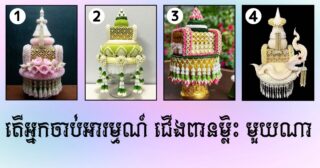10 Super-Easy Houseplants That Absorb Toxins From The Air So That You Don’t Have To
The National Aeronautics and Space Administration did a research on the power of plants. The NASA Clean Air Study found that some plants can trap air pollutants. Our homes are packed with benzene, formaldehyde and ammonia. These are found in your household cleaning products and even cosmetics.
Toxins may lead to allergies, asthma, and many respiratory issues. Experts at NASA say we should use plants to clean the air in our homes.
Trichloroethylene is found in printing inks, paints, lacquers, varnishes, adhesives, and paint removers. It causes excitement, dizziness, headache, nausea, and vomiting followed by drowsiness and coma.
Formaldehyde is contained in paper bags, waxed papers, facial tissues, paper towels, plywood paneling, and synthetic fabrics. It causes irritation to nose, mouth and throat, and in severe cases, swelling of the larynx and lungs.
Some say that their homes are clean. Go through the following list. Each of the products listed actually affect the air you breathe:
- Glues and adhesives
- Carpets
- Chemicals in household cleaning products
- Foam insulation materials
- Paint
- Pressed-wood products
Keep a few plants in your home to purify your air. We have some suggestions:
1. English Ivy (Hedera Helix)

It spreads easily and grows well in pots. English Ivy eliminates airborne fecal-matter particles and cigarette smoke. It’s a low-maintenance plant and doesn’t require much attention.
2. Golden Pothos (Epipremnum Aureum)

It’s one of the most effective plants when it comes to eliminating formaldehyde. Golden Pothos eliminates carbon dioxide, too.
3. Boston Fern (Nephrolepis Exalta Bostoniensis)

It’s an excellent air humidifier, and eliminates formaldehyde. It grows really big, so you better give it a good spot in your home.
4. Dracaena (Dracaena Deremensis)

It needs small amount of sunlight and moderate watering. This plant eliminates trichloroethylene released from solvents and varnishes.
5. Bamboo Palm (Chamaedorea Seifrizii)

It likes indirect lighting and removes benzene and trichloroethylene. The Bamboo palm adds humidity to air, and is resistant to insect infestation.
6. Dragon Tree (Dracaena Marginata)

It’s used in offices and eliminates xylene from air. Xylene is the chemical released from car exhaust, paints, and cigarettes. It needs low maintenance and should be grown into a braid.
7. Peace lily (Spathiphyllum)

Peace lilies have unique white flowers and removes trichloroethylene, benzene, acetone and alcohols from air. Be careful, it’s toxic to pets and children.
8. Lady palm (Rhapis Excelsa)

It needs a lot of water in spring and summer, and the leaves grow really thick. This plant filters indoor pollutants.
9. Spider plant (Chlorophytum Comosum)

It needs natural indirect light. The spider plant grows in moist environments, and owners usually place it near fireplaces or kitchens as it removes carbon monoxide.
10. Snake plant (Sansevieria Trifasciata)

It’s unique, and turns carbon dioxide into oxygen at night. Keep it in the bedroom or living rooms to eliminate formaldehyde.
Keep in mind that indoor plants aren’t safe for consumption, and you have to be really careful if you have kids or pets. Cleaning your home is really important as it helps you optimize your overall health and detox your body.
Source: www.healthyandnaturalworld.com
https://www.healthyfoodhouse.com














